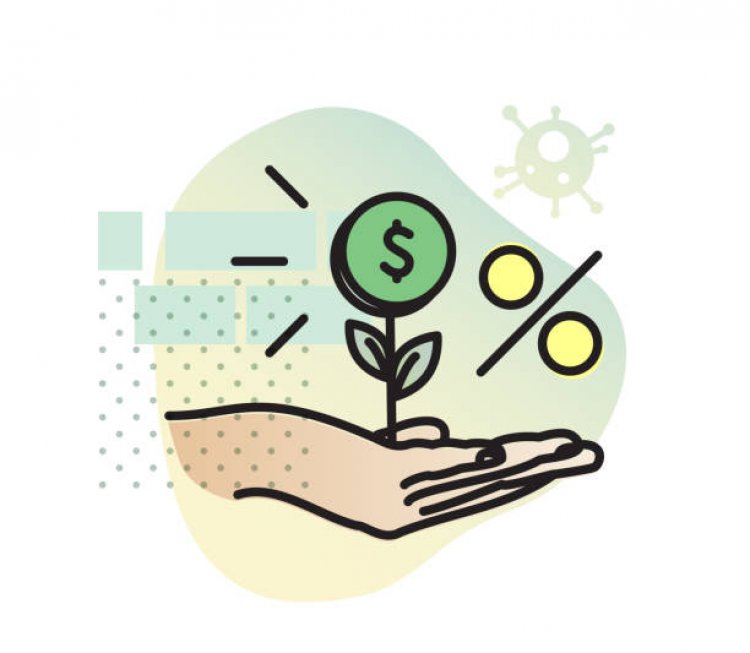Financial and Micro-Financial Sector in Nepal - An Overview
Get an in-depth understanding of the financial and micro-financial sector in Nepal, including the different models of micro-finance, their growth and dominance in the Nepalese market.

Nepal has come a long way in terms of financial sector growth in the last two decades. The Nepalese financial sector is composed of both banking and non-banking sectors and has seen an exponential growth since the liberalization drive in 1980. The banking sector is comprised of NRB (Nepal Rastra Bank) and commercial banks while the non-banking sector consists of development banks, micro-credit development banks, finance companies, co-operative financial institutions, and more. This article will delve into the Nepalese financial sector and its various components.
Banking and Non-Banking Sectors
The banking sector in Nepal is dominated by commercial banks, which hold 90.5% of the total investment in the Nepalese financial sector. The non-banking sector consists of development banks, micro-credit development banks, finance companies, co-operative financial institutions, and non-government organizations (NGOs) performing limited banking activities. Other financial institutions include insurance companies, employee's provision fund, citizen investment trust, postal saving offices, and Nepal Stock Exchange.
Growth of Financial Institutions
There has been a tremendous growth in the number of financial institutions in Nepal in the last two decades. At the beginning of the 1980s, there were only two commercial banks and two development banks performing banking activities in Nepal. But after the liberalization drive in 1980, there was a promising expansion of the financial sector in Nepal. By mid-January 2007, NRB licensed bank and non-bank financial institutions totaling 203. These financial institutions are under the regulation and supervision of the NRB. Besides these institutions, there are more than 3000 registered savings and credit cooperatives, and as many as 10,000 NGOs involved in this sector.
Micro-Finance Models
The microfinance practices of the organized sector in Nepal can be broadly grouped into 7 microfinance models. They are:
- Grameen Model:
The Grameen Model is based on the principles of the Grameen Bank in Bangladesh and is a microfinance model that provides credit and other financial services to the poor, especially women, in rural areas. It focuses on group-based lending and encourages entrepreneurship and income-generating activities among the poor. This model is based on the idea of "bankers without banks" and has been successful in providing financial services to the poor and increasing their economic independence.
- Small Farmers Co-operative Model (SFCLs):
The Small Farmers Co-operative Model (SFCLs) is a microfinance model that provides financial services to small farmers in rural areas. This model is based on the cooperative principles and encourages farmers to come together and form a co-operative for the purpose of accessing financial services. The co-operative provides its members with loans for agricultural and other income-generating activities and also helps in marketing their produce.
- FINGOs Model:
FINGOs Model is a microfinance model that is based on the principles of non-government organizations (NGOs). This model focuses on providing financial services to the poor in rural areas and is implemented by NGOs that have a deep understanding of the local community and their needs. The FINGOs model is based on the idea of "banking the unbanked" and provides financial services such as savings, loans, and insurance to the poor, who otherwise would not have access to these services.
- Priority Sector and Deprived Sector Credit Model:
The Priority Sector and Deprived Sector Credit Model is a microfinance model that provides credit to the priority and deprived sectors of the economy such as small farmers, micro and small enterprises, and low-income households. This model focuses on providing financial services to those who are in need but are unable to access them due to a lack of collateral or a formal credit history. This model is implemented by commercial banks and other financial institutions and is regulated by the Nepal Rastra Bank (NRB).
- Savings and Credit Co-operatives (SACCOS) Model:
The Savings and Credit Co-operatives (SACCOS) Model is a microfinance model that is based on the cooperative principles. This model provides financial services such as savings, loans, and insurance to its members who are from the same community. The SACCOS model is based on the idea of "banking the unbanked" and encourages the poor to come together and form a co-operative for the purpose of accessing financial services.
- Project-based Micro-financing Model:
The Project-based Micro-financing Model is a microfinance model that provides credit to individuals or groups for specific income-generating projects. This model focuses on providing financial services to those who have a specific project in mind but are unable to access credit from traditional financial institutions. This model is usually implemented by development banks and other financial institutions and is regulated by the Nepal Rastra Bank (NRB).
- Wholesale Micro-financing Model:
The Wholesale Micro-financing Model is a microfinance model that provides credit to microfinance institutions (MFIs) for the purpose of on-lending to the poor. This model focuses on increasing the reach and access of financial services to the poor by providing credit to MFIs, which then provide financial services to the poor. This model is usually implemented by commercial banks and other financial institutions and is regulated by the Nepal Rastra Bank (NRB).
In conclusion, the Nepalese financial sector has come a long way since its liberalization drive in 1980. With the growth in the number of financial institutions, the sector has become more diverse and inclusive. The commercial banks continue to dominate the financial sector, while the micro-finance models provide financial services to the unbanked and underbanked population in the country. The Nepalese financial sector has a long way to go, but with the right policies and regulations in place, it can continue to grow and contribute to the country's economic development.
What's Your Reaction?





































































































